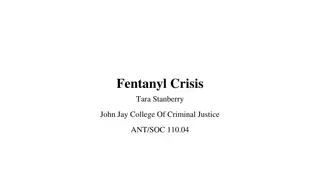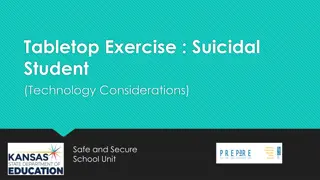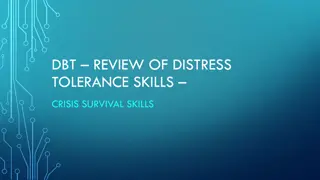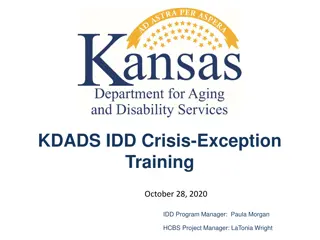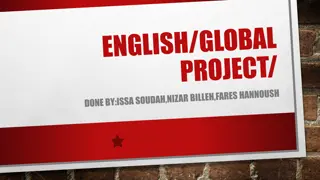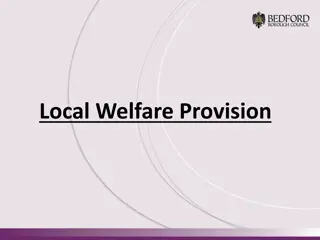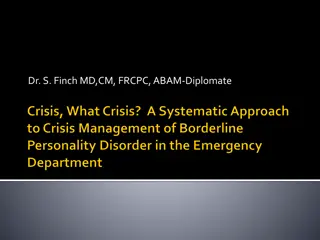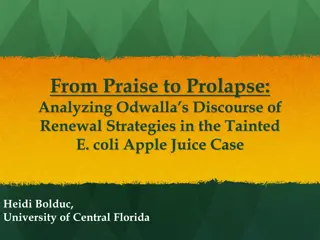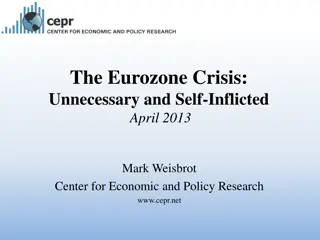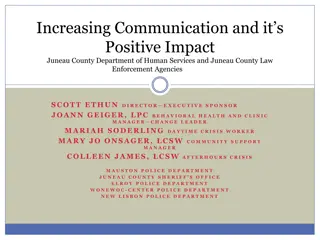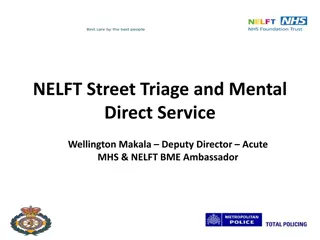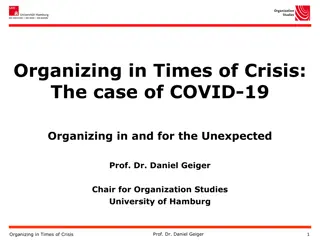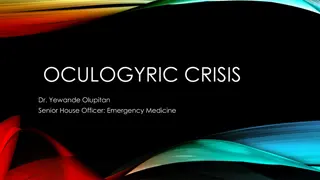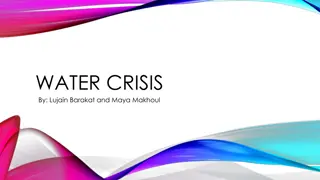Crisis Management Training - Aims and Strategies Discussion
Explore the essentials of crisis management training focusing on identifying current crises, crafting response strategies, and studying practical cases. Understand the concept of crisis management, its relevance to child safeguarding, and engage in group discussions on handling crises effectively. Delve into suggested responses and preparation steps to navigate through challenging situations.
Download Presentation

Please find below an Image/Link to download the presentation.
The content on the website is provided AS IS for your information and personal use only. It may not be sold, licensed, or shared on other websites without obtaining consent from the author.If you encounter any issues during the download, it is possible that the publisher has removed the file from their server.
You are allowed to download the files provided on this website for personal or commercial use, subject to the condition that they are used lawfully. All files are the property of their respective owners.
The content on the website is provided AS IS for your information and personal use only. It may not be sold, licensed, or shared on other websites without obtaining consent from the author.
E N D
Presentation Transcript
Crisis Management Training 1st August 2018
Welcome and Prayer Teresa Devlin
Aims for the Day To discuss what the current crises are that you are facing To outline a suggested response to crisis management To go through the practicalities of four example crises that have faced the Church in relation to safeguarding.
Introductions Teresa Devlin
Introductions Introduce yourself and the Church body you are representing What do you understand crisis management to be? What would you like to get out of today?
What is crisis management? Crisis management is the application of strategies designed to help an organisation deal with a sudden and significant negative event.
Why are we talking about this in relation to child safeguarding?
Group Work What are the crises that you are currently managing, have managed in the past, or can predict for the future? What lessons have you learned from your experience around crisis management?
A suggested response to crisis management Teresa Devlin
In preparation The Church authority should meet with a critical friend to: Discuss the current crisis and how it might be managed Decide what are the redlines Decide who will be in a crisis management team Agree who is the coordinator of responses to this crisis The Church authority accepting overall responsibility
Suggested Response Gather together a crisis management team to scope tasks and allocate responsibilities. This is dependant on the situation but could include: Church authority Communications person DLP Canon lawyer Civil lawyer? Support for both complainant and respondent? Chair of safeguarding committee? Critical friend
Action by the team Discuss the crisis from a range of perspectives to help identify issues to be addressed: Lay faithful Complainants and families Church authority Respondent and their families Church personnel (Pope, Papal Nuncio, Metropolitan, Superior General, Clerics, religious and lay) NBSCCCI Media Advise on priorities safeguarding of children, responding to complainant etc Identify actions based on the above Identify roles based on these actions Using all of the above produce a crisis management plan (this can be updated and revised throughout). Identify coordinator to see the plan through
What a Crisis Management Plan Could Include Ensure statutory obligations are met Ensure canonical obligations are met Ensure there is no risk to children Who needs support? and how that support will be met Develop communications plan When the plan will be reviewed or updated At the end of the process conduct a critical incident review, to identify lessons
Group Work Discuss how you would deal with the scenario
Issues that need addressing scenario 1 The crisis management team should involve the Support Person and Advisor in this situation Liaising with the statutory authorities Identifying a suitable alternative accommodation Identifying suitable support for complainant, respondent and their families Written restrictions in form of interim management plan No public ministry No contact with complainant No unsupervised contact with children No clerical garb Removal of celebret Consider public statement to be read at mass: Who delivers it What is the content Are the lay faithful asked to pray for them?
Issues that need addressing scenario 1 Communication who needs to know? Colleague clerics and religious in person or through e-mail Family of cleric in person by letter Complainant in person by letter Lay faithful/community public statement General media public statement? National Board Removal of public information relating to cleric/religious websites, bulletins, newsletters etc Removal of membership of relevant postings (Boards etc)
Issues that need addressing scenario 2 The Crisis management team in this instance should include a canon and civil lawyer Do you liaise with the Holy See and the Nuncio? Communication How do you respond to media enquiries? How do you respond to the information given out by the Bishop of Ballygobackwards? Can the Bishop be made to step aside? Clarity of management responsibility on an interim and long term basis Advise on how to respond if people ask questions in training Ensure access to confidential data is removed Ensure contact details are removed and that the Bishop is removed from all other relevant postings (i.e. Boards that he is a member of)
Group Work Discuss how you would deal with the scenario
Issues that need addressing scenarios 3 and 4 Be prepared Gather a team to plan action Identify a communications plan and identify a spokesperson Apologise Arrange to meet those affected and be as open as possible Talk about the issues at homilies Refer to the issues in newsletters and in pastoral letters State what corrective action has been/will take place and give timeframes Advise on how to respond if people ask questions in training
Communications Plan As part of the crisis management plan you should have a communications plan prepared in advance this will include: What are the redlines? Who is your audience? What are the messages you want to send? How are going to send them? Who takes responsibility?
Top tips for effective communication Be honest, apologise and assure people that children are not at risk Don t minimise, don t relativise Don t let vanity and ego get in the way Prepare in advance and go in with your eyes opened Maintain control and plan when you want to release information Get to the truth quickly and effectively- if you are going to stall be clear and honest why Don t air your dirty laundry, comment only on what you are being asked about Hold your nerve and maintain control Stick to the key messages you have agreed No comment doesn t prevent news coverage. It just keeps people from hearing your side of things, though it is not always possible to comment.
Top tips for effective communication DOs Be honest Appropriately share information Anticipate and prepare Ensure that public information is current and correct (own media outlets) Maintain control- get there before others Be humble Take responsibility DON Ts Panic Allow emotion to cloud your judgement Don t breach confidentiality Don t be dishonest and cover up








